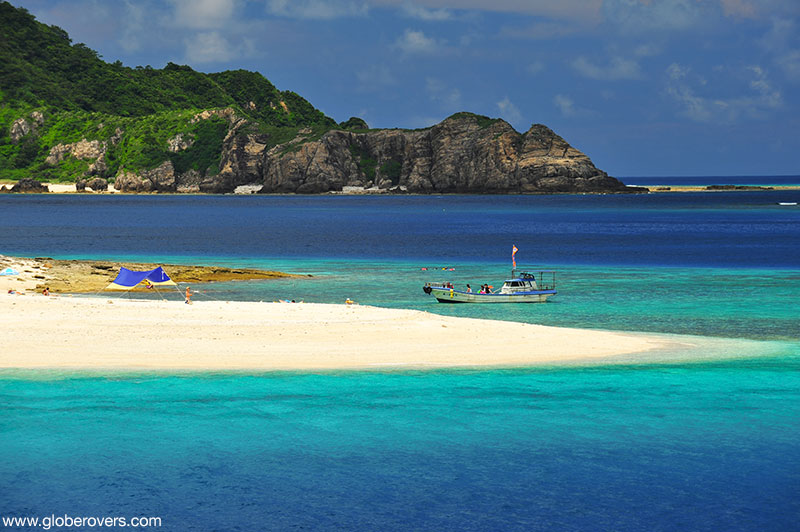
Kn
Okinawa Festivals are great fun and the Japanese sure know how to do it right! Welcome to the Eisa Festival of Okinawa Island
Okinawa is part of a chain of Japanese islands that stretches north all the way from Kyushu, the third-largest island of Japan, to Taiwan to the south. Known as the Ryukyu Islands, of which Okinawa is the largest and most populous, they were ruled by the independent Ryukyu Kingdom from the 15th to the 19th century.
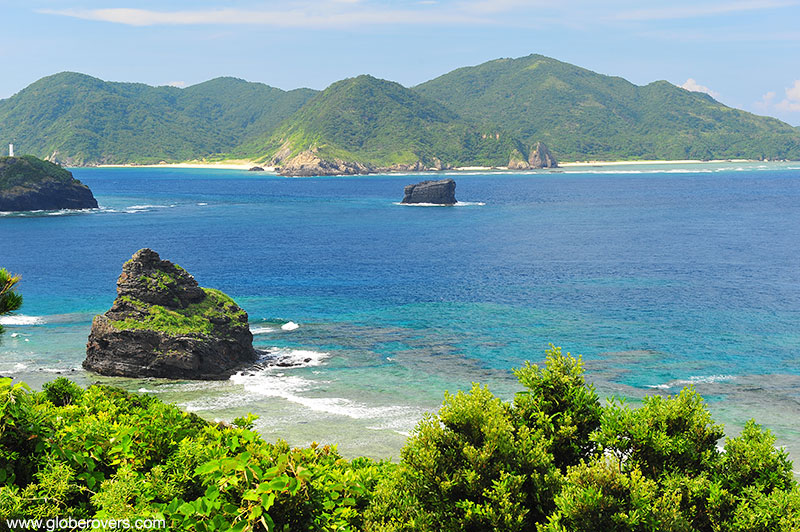
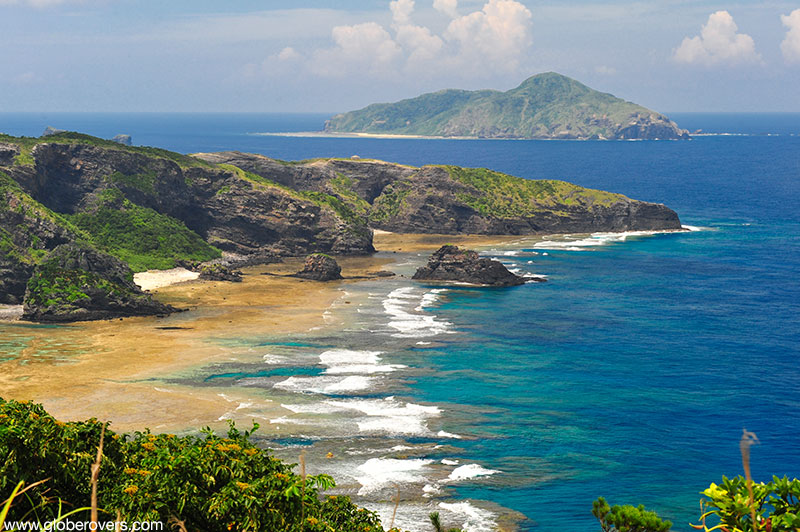
Why travel here?
- The low-down: The southern Japanese islands of Okinawa is a little paradise on earth – void of mass tourism, finest Japanese quality and hospitality, and the unspoilt natural treasures!
- The brightest highlight? The islands, beaches, crystal clear turquoise waters, and life below the water surface. The festivals and food are great too!.
- Intrepid destination? Some of the islands are such well guarded intrepid secrets that we better not reveal their names and locations here!
- Globerovers score (10 is highest): Okinawa gets a 9.5 for its unspoilt beauty, great festivals, unique foods, historic value, and best of all – it is not (yet) a mass tourism destination – in
particular, the smaller islands.
With its rich history founded in the days of the Ryukyu Kingdom, today the island and its people still celebrate festivals such as the Ryukyu Lantern Festival and the Ryukyu Kaiensai Fireworks Festival. Other festivals celebrated are the Festival of Naha Haarii and Itoman Haarii, Tedako Festival, Eisa Festival, and the Naha Festival.
Okinawa, one of the longest-lived and healthiest populations in the world, practice a principle they call
Michael Pollan, American author and journalist.hara hachi bu: Eat until you are 80 percent full.
Okinawa Honto, the main island, is home to the capital Naha, as well as several attractions including the Churaumi Aquarium. Its majestic giant whale sharks, massive manta rays and sharks are housed in the Kuroshio Tank – the largest tank of its kind in the world. With more than 700 different species, the aquarium is spread over three floors.
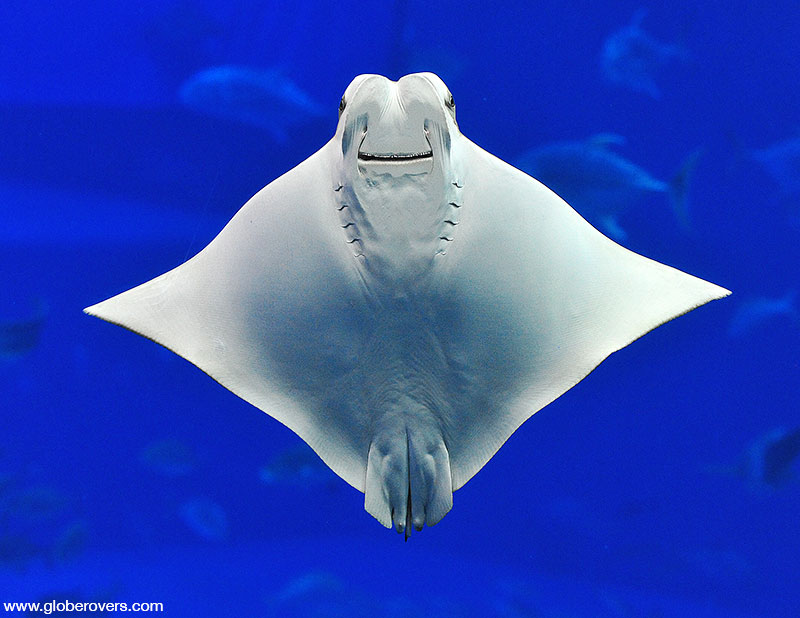
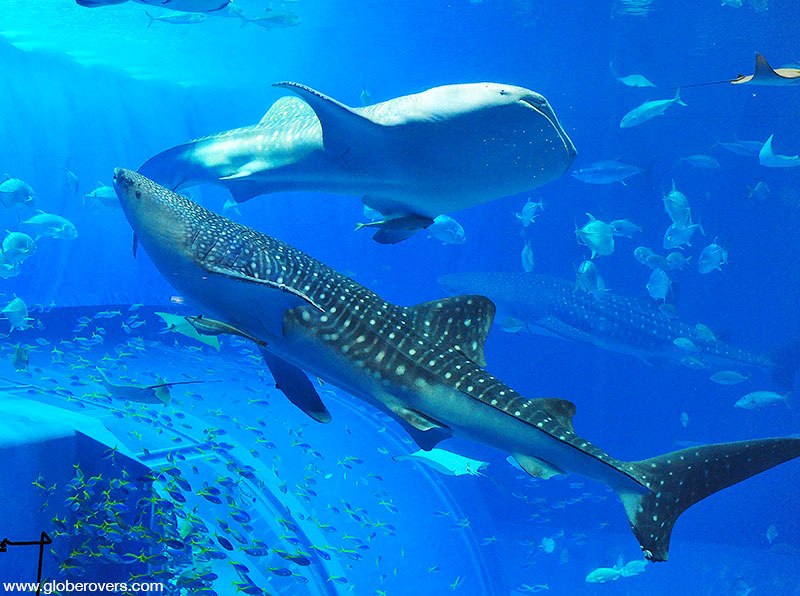
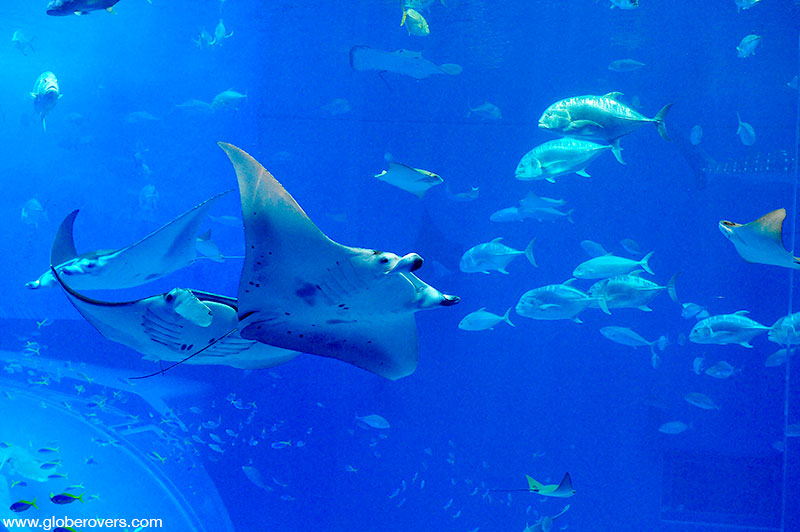
Okinawa’s main island is also known for its rock formations, particularly those at the northernmost point of the island. Cape Hedo has a rugged coast with grandeur rock formations and stunning panoramic views of the Pacific Ocean and the East China Sea.
Tadake Falls located in the heart of the northern Okinawa jungle offers adventurous hiking to an awe-inspiring remote waterfall.

In the south lies the Gyoku Sendo otherworldly limestone cave spanning over 5 km. The pristine underground waters here are surrounded by psychedelic stalactites and stalagmites that create a magical scene to be conquered by adventure seekers.
The capital Naha offers the Makishi Public Market that will give you a glimpse of the days when Okinawa was known as the Ryukyu Kingdom. Here you can learn about everyday life in Okinawa by browsing around the many stores in the small alleys.

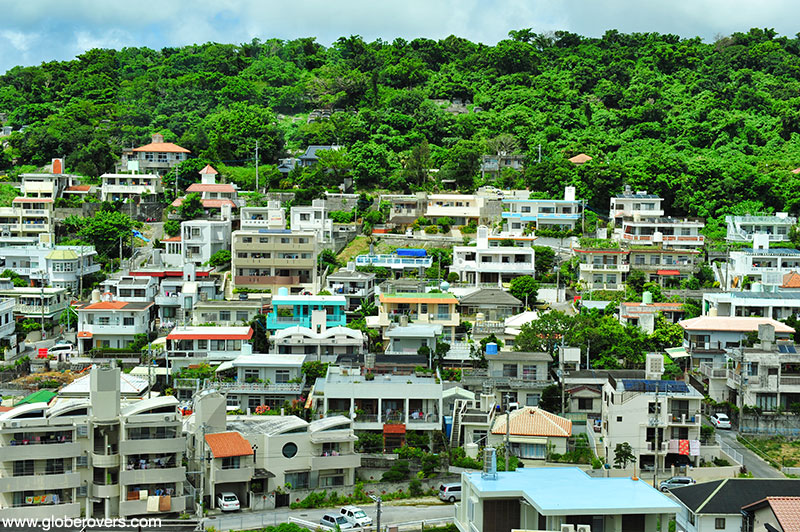
In the fresh meat section lookout for the pig’s face, feet and stomach, as well as the many kinds of colourful fish and shellfish and the unique tropical fruits and vegetables.
Learn about the “Battle of Okinawa” by visiting the Japanese Navy Underground Headquarters. Dug into a hillside outside of Naha city, a 450-metres-tunnel-complex tells the stories of desperation by the Japanese soldiers as the Americans closed in.
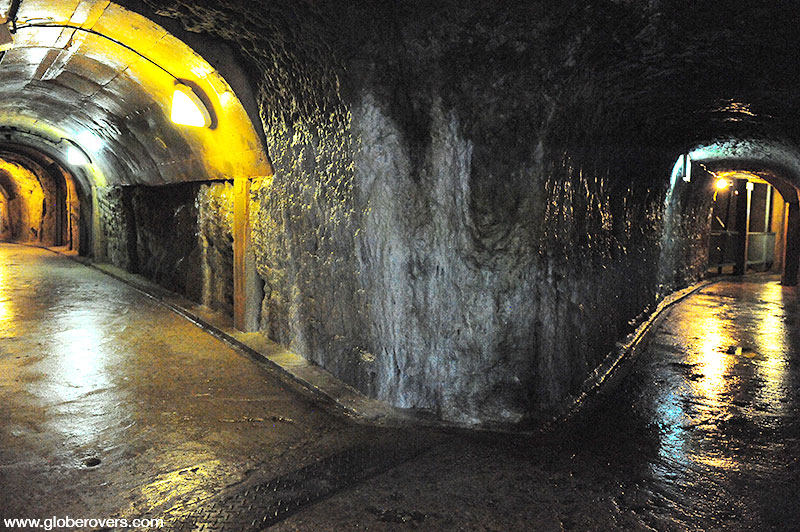
Okinawa is surrounded by tropical waters that are home to a stunning sanctuary that speaks of Mother Nature’s splendour. Scuba diving, and even snorkelling should not be missed.
Most visitors to Okinawa come to explore the small islands surrounded by turquoise waters fringed by long stretches of white pebble beaches. Okinawa has some of the most beautiful beaches in the world, especially those on the islands of Miyako-jima, Kumejima, and Zamami.
Chatan Eisa and the Orion Beer Festival
One festival held in the summer, not to be missed, is the Eisa Festival.
Eisa is a dance performed to honour the ancestral spirits. The dancers are accompanied by singing, chanting, and the beating of taiko drums.
Take Note:
- The Eisa Festival is held in July or early August at Kuwae Comprehensive Athletic Park next to the Nirai Centre (440 Kuwae, Chatan Town), which is about 20 km north of Naga city centre.
- Admission is free but
arrive well before the starting time at 16:00 to secure the best seating. - The Orion Beer Festival is normally held at the Koza Athletic Park in Okinawa City.
The Eisa dance performance is a ritual that originated to send the ancestral spirits on their journey to the spiritual world after they descended to earth for the Obon Festival. Celebrated in Japan for over 500 years, the Obon is a Buddhist-Confucian custom that has evolved into a family reunion during which time people return to ancestral family homes and clean their ancestors’ graves. During this time the spirits of their ancestors are believed to revisit the household altars. In Okinawa, the “Kyū Obon” (Old Obon) is celebrated on the 15th day of the seventh month of the lunar calendar. It is celebrated during other times in the rest of Japan, but generally around July or August.
Taiko drumming is a prominent and very entertaining part of the annual Eisa folk dancing festival in Okinawa. In Japanese, the word taiko (太鼓) refers to any kind of drum, though most people think of taiko as an ensemble of drums and drumming which more specifically is referred to as
kumi -taiko (組太鼓 “set of drums”). The Eisa dances, which originated in Okinawa, commonly make use of the taiko drummers during their performances.
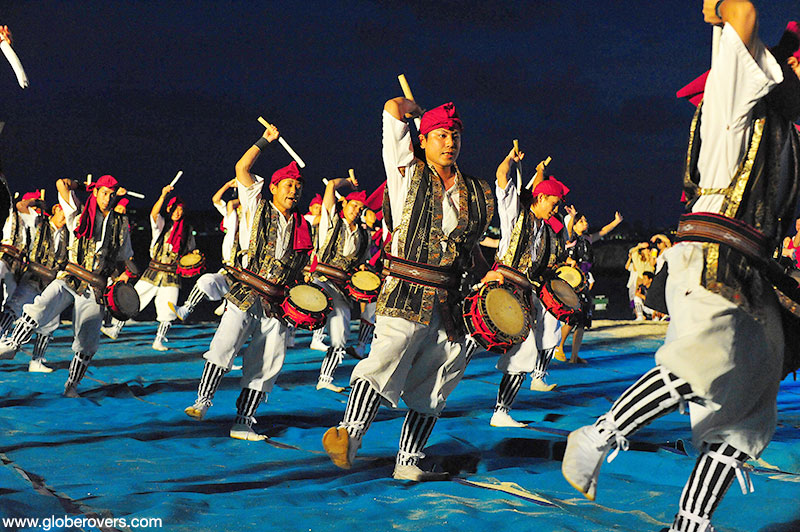

In Okinawa’s Chatan area, located north of the capital Naha, the Eisa Festival is accompanied by spectacular fireworks, a feast of Japanese food, and live music performances. Note the ever-present Gajan Gani or Chondara (clown) who walks in and alongside the drummers and amuses the crowds by dancing to his own beat. In addition to his entertainment duties, he subtly leads the Eisa performing group, often in a loud series of whistles.
The Orion Beer Festival normally runs concurrently with the Eisa Festival.
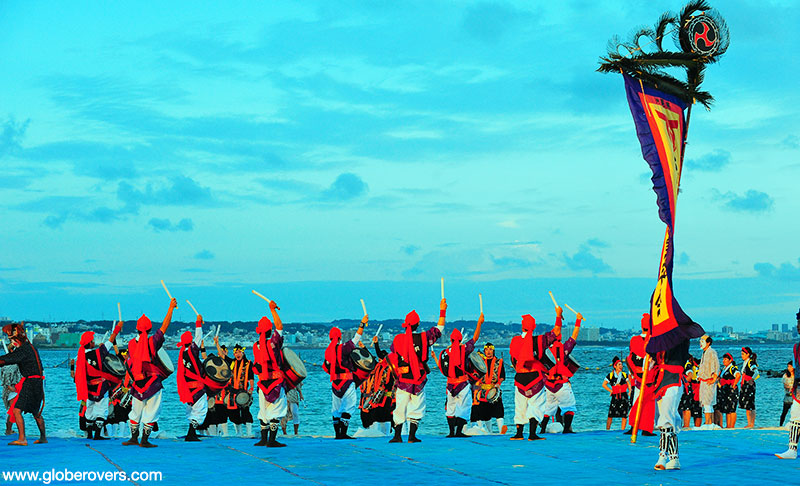
Turquoise Waters – Coral Strewn White Beaches
Okinawa is known for its idyllic turquoise waters fringed by beaches with powdery white sand or white pebbles mixed with small broken pieces of bleached corals.
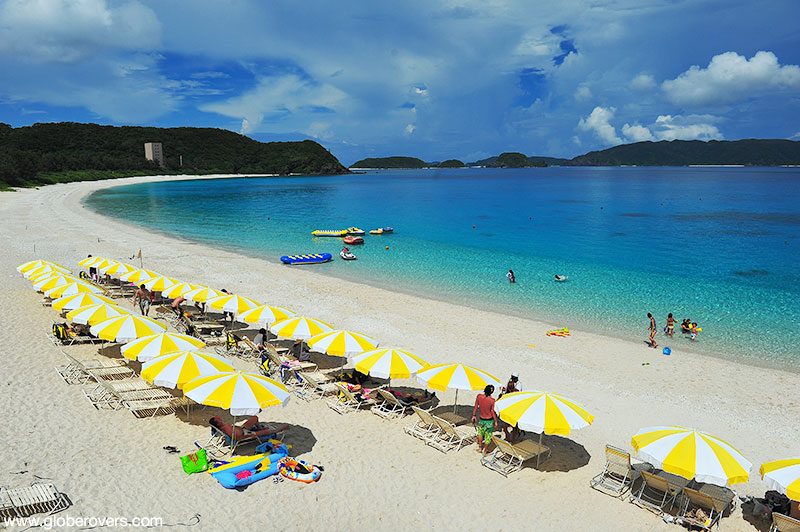
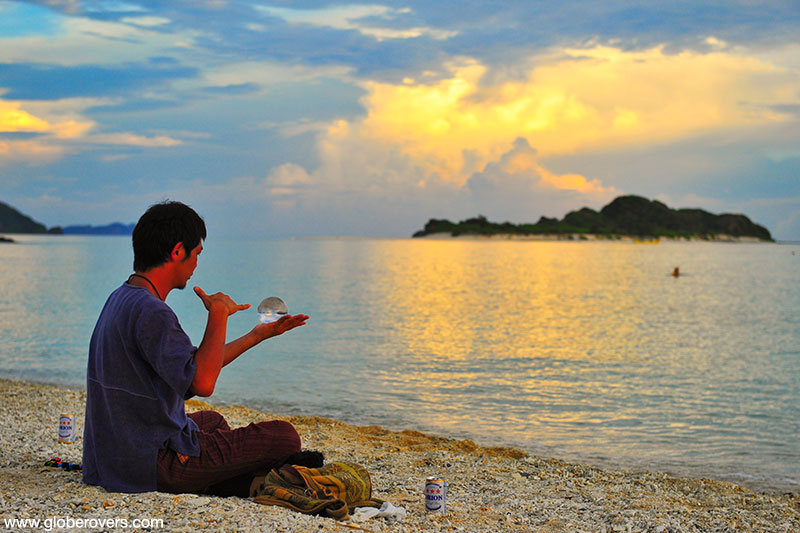
Among the most renowned beaches are on the northern shores of the main island of Okinawa, in the central area, and in the south. It is debatable which area is most beautiful. Those who know Okinawa will undoubtedly vote for the beaches of the smaller islands, many of which are uninhabited and surrounded by the delicate coral reefs in rather shallow waters.
Take Note:
- Ferries and aeroplanes connect Okinawa’s main island with the other islands of the Okinawa archipelago.
- Kume Island and Yoron Island have airports with daily flights to Naha. Most inhabited islands of the archipelago are connected to Naha Port and/or other ports by ferry.
- A rental car is advisable for travelling around the main island.
Among these beaches are those at Zamami Island such as Furuzamami Beach and Ama Beach. Other beautiful beaches include Yonahamaehama at Miyakojima Island, and the beaches at Ishigaki Island, Taketomi Island, and Hateruma Island.
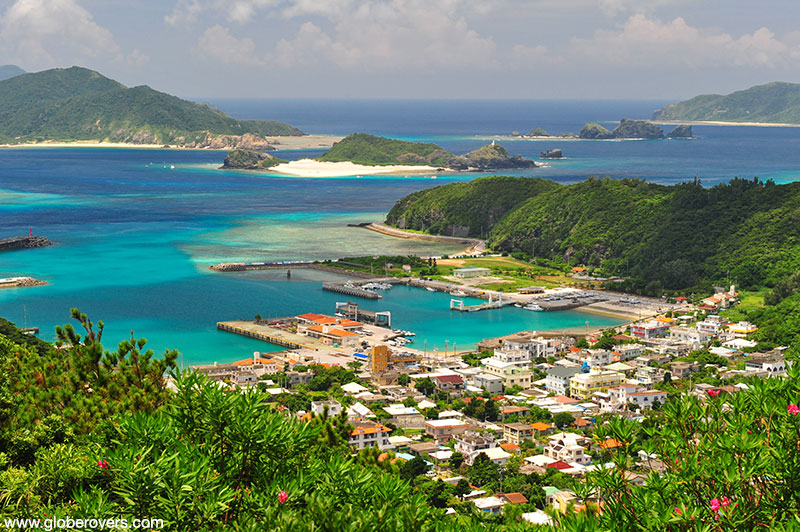
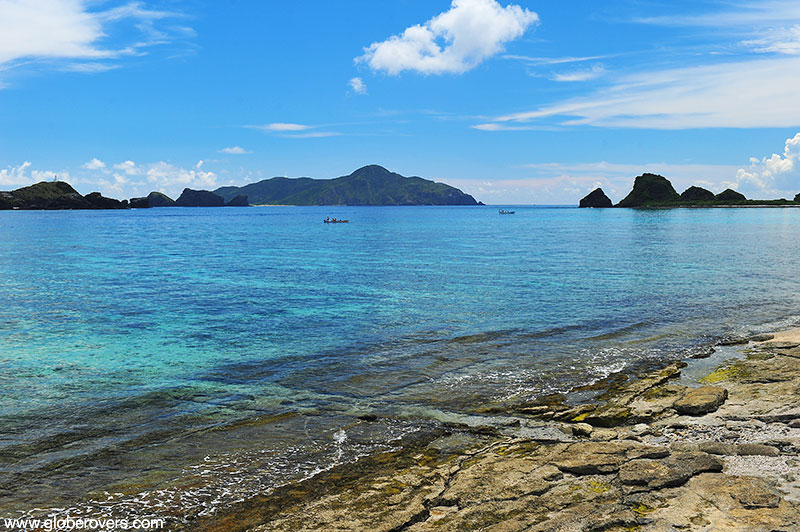
Often the best beaches are secret and only known to those who want to protect these beauties for themselves!
☛ Read about other Japan adventures
Make sure to bring your masks, snorkels and fins as the snorkelling at the right locations, preferably during low tide, is among the best in the world.
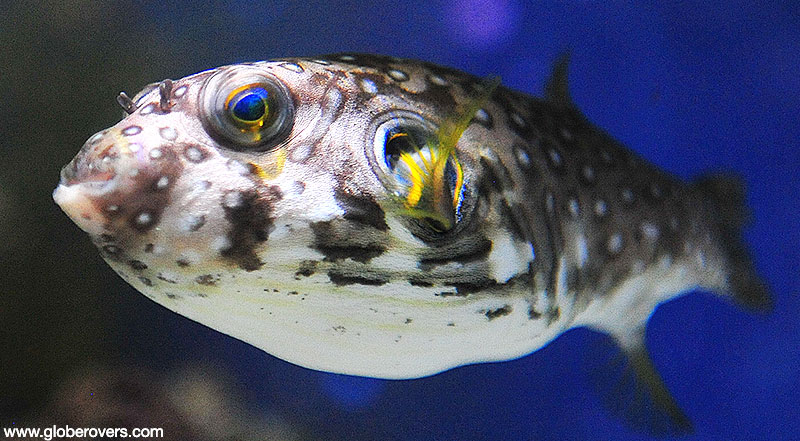
Castle, Tunnels and Sampuru
Okinawa is more than just festivals and beaches. The nature across the islands is breathtaking – waterfalls, rock formations, caves, tropical rain forests, botanical gardens, lagoons, and more!
The food of Okinawa is unique, among which are the hija-sashi (goat sashimi), rafute (simmered pork belly), umibudo (sea grapes, nicknamed “green caviar”), and benimo (purple sweet potato used in benimo ice cream, benimo fries, benimo noodles, benimo doughnuts, benimo anything).
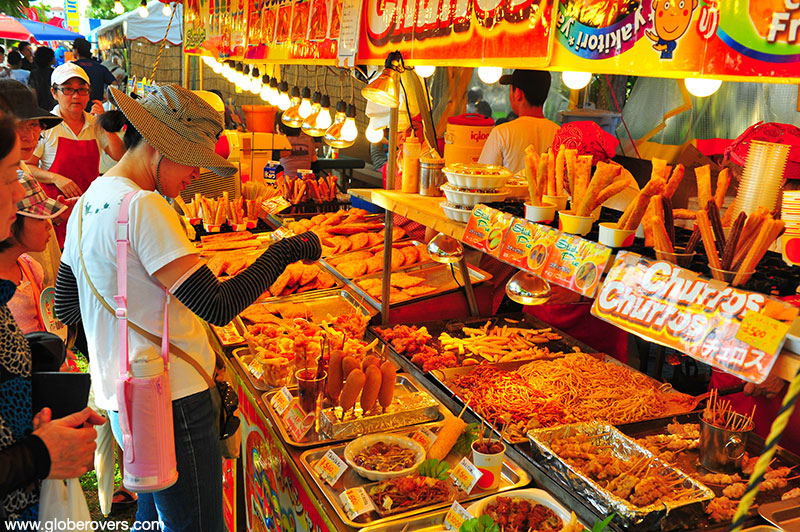
Other than being a beautiful group of islands with great food, Okinawa boasts a rich history, though not always peaceful.
Take Note:
- Shuri Castle lies to the east of Naha and can be reached in ten minutes from central Naha or 20 minutes from Naha Airport.
- Alternatively, it is a 15-20-minute walk or a five-minute bus ride from Shuri Station on the Okinawa Monorail.
- The World War 2 tunnels are directly east of the airport, to the south of Naha, and can be reached by public bus or rental car.
With its unique stonework and architectural influences from both China and Japan, Shurijo Castle was the palace of the Ryukyu Kingdom between 1429 and 1879. During the 1945 Battle of Okinawa, the castle was almost completely destroyed by a fire. Between 1957 to 1989 large parts of the castle were restored.
PLEASE NOTE: In October 2019, a fire has destroyed Seiden (Main Hall) of Shuri Castle (photo below).
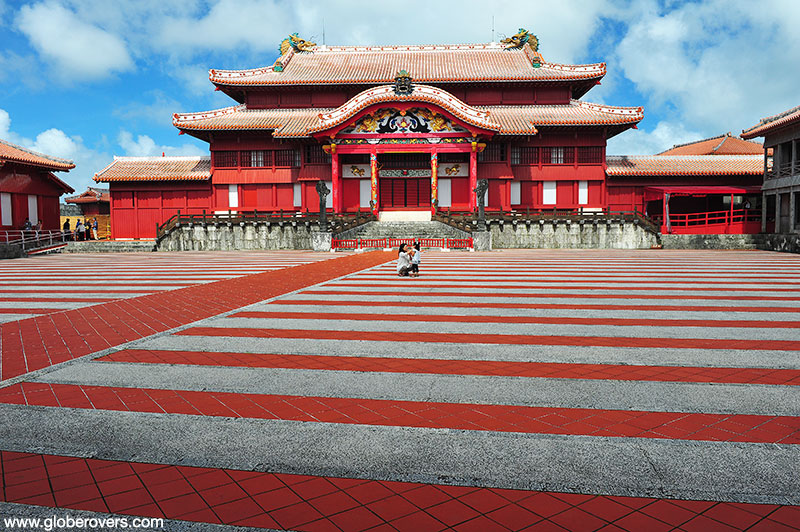
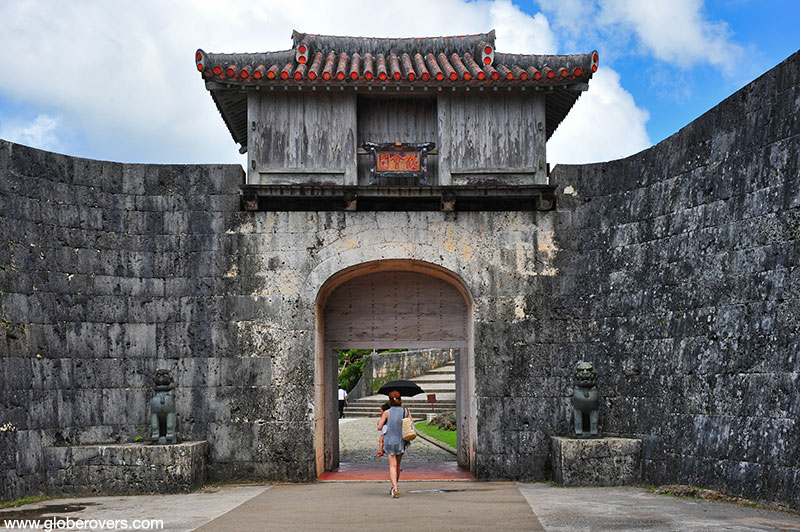
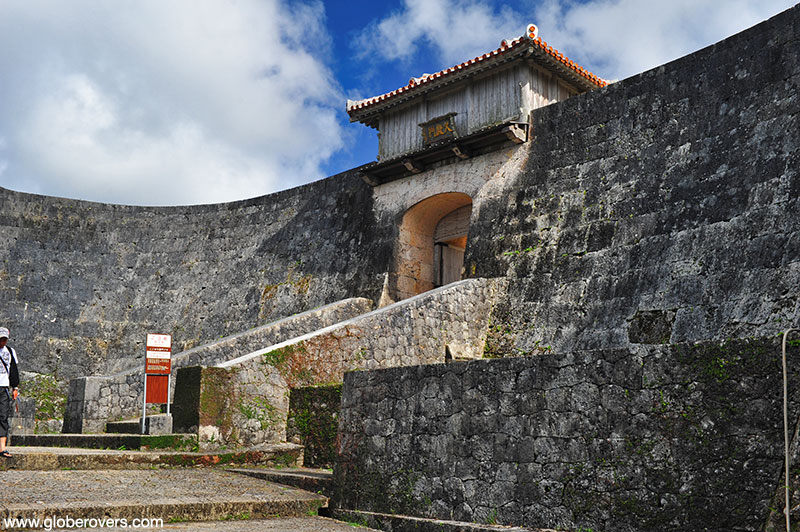
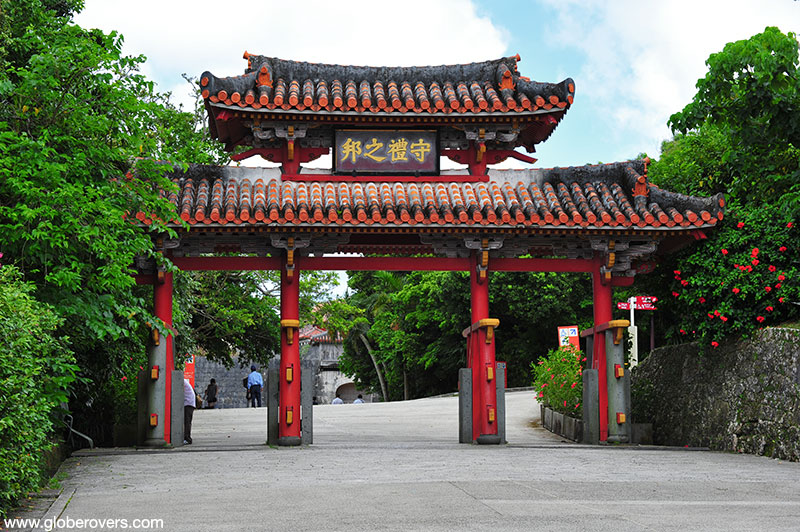
The Japanese Navy Underground Headquarters, an extensive network of tunnels used as air-raid shelter during WWII, stand testament to the perils of war.


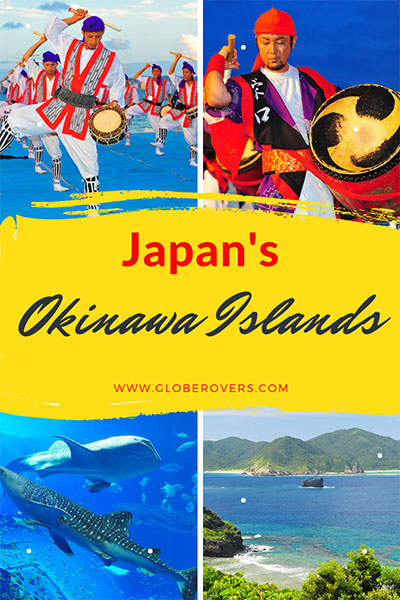

Blog post and photos by Peter who has been travelling almost full-time since 2005 and has been to over 122 countries. He visited several countries, such as Japan, more than 20 times. Peter is Editor-in-Chief and Publisher of GlobeRovers Magazine, an independent travel magazine focused on intrepid destinations.

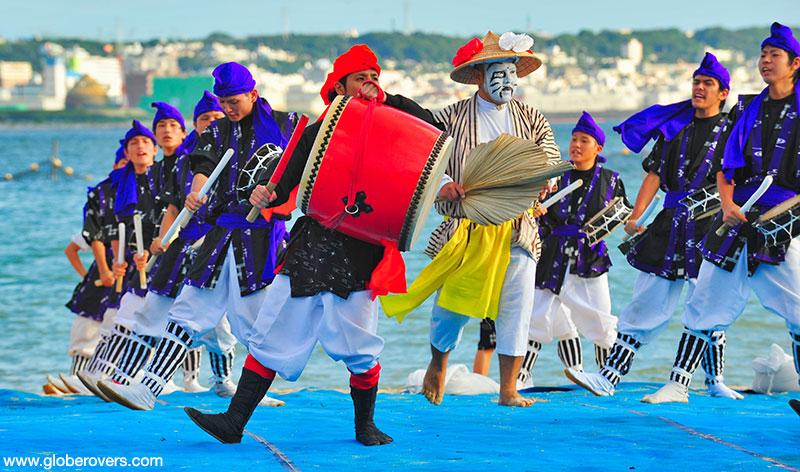
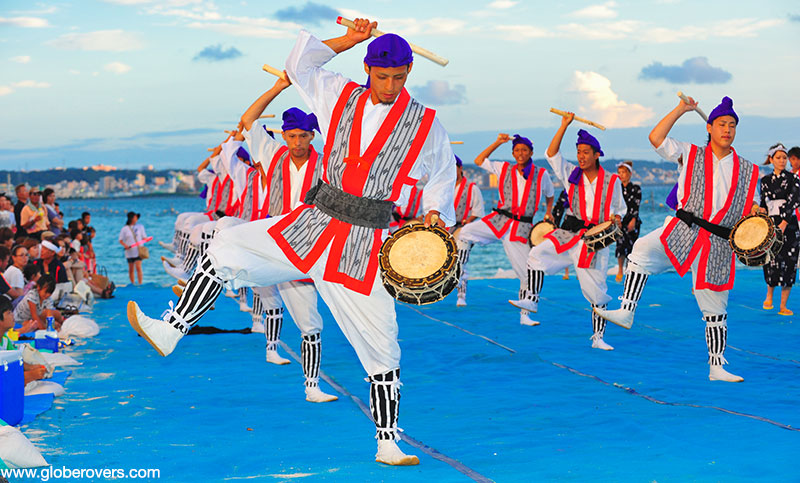
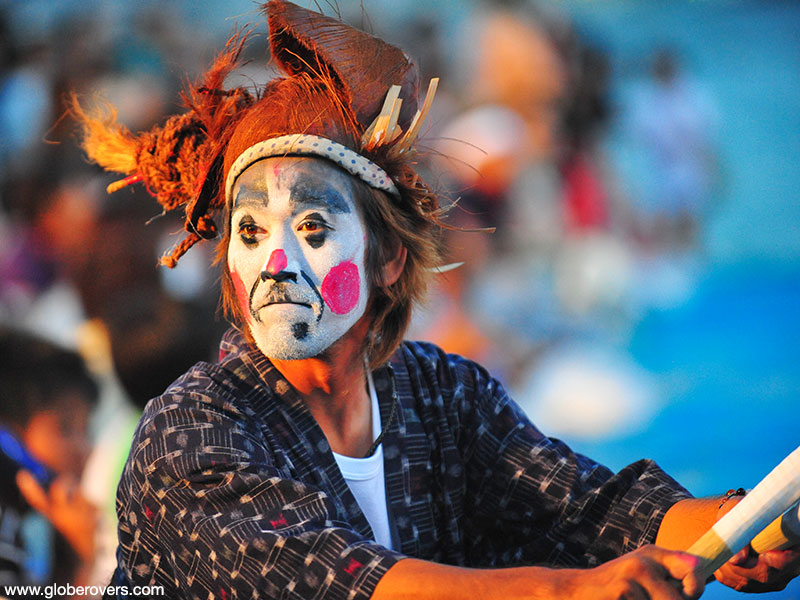
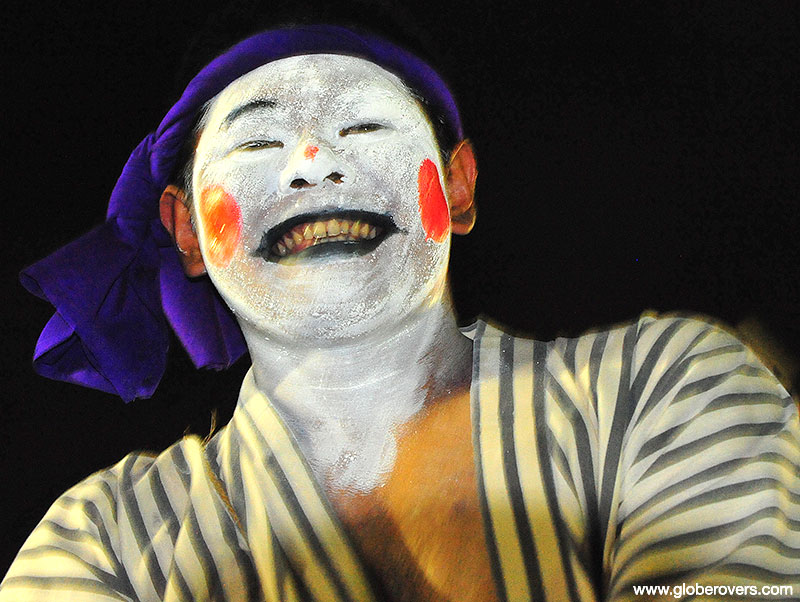
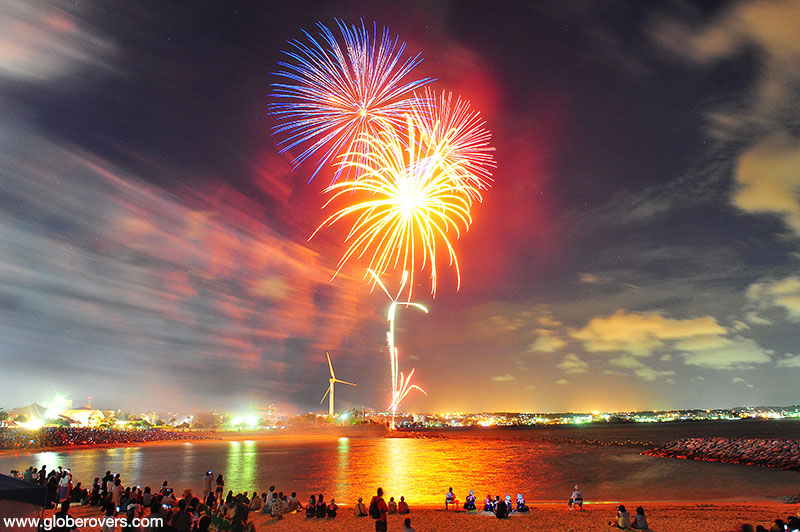

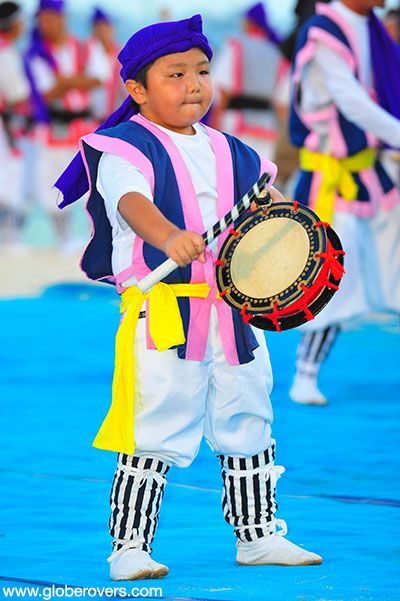
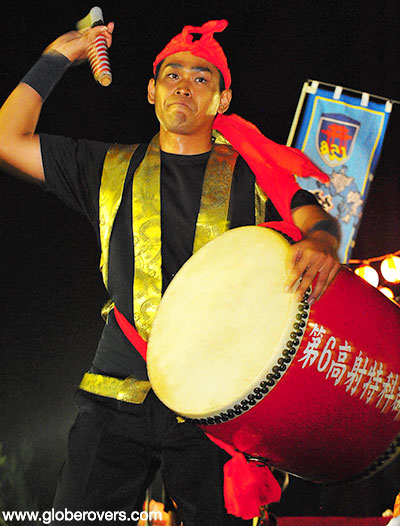
4 comments
I never knew Okinawa is this beautiful. Thoughts it is mainly an army base for the Americans.
Thanks Gary. I did not even see anything related to the army base. Oh, I did see a few soldiers on evening but very very low key. Okinawa is really beautiful.
Great post, Thanks very much.
Thanks James. Much appreciated.